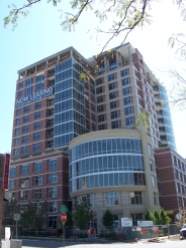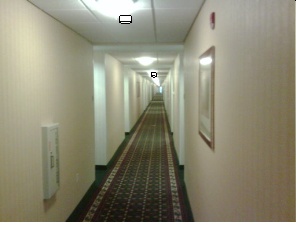How to get good Wi-Fi Hotspot wireless coverage for large buildings

Large buildings are very difficult to provide 100% Hotspot wireless coverage inside. Typical large buildings where Wi-Fi Hotspots are are installed are airports and shopping malls. Two points about construction are important for wireless network installation
Load bearing structures (columns, elevator shafts and floors) use steel reinforced poured concrete or steel beams. Wireless signals will not pass through these structures
Horizontally on floors the obstacles are columns and studs, the wireless signals pass easily through less dense materials such as sheet rock walls. It is important to have the signal source mounted on the ceiling and pointing down as there are less obstacles (I.e. furniture and people) to absorb the wireless signal.
It is clear that wireless signals will not pass vertically in a high-rise tower, however wireless signals will pass horizontally along each floor provided that at least two access points are installed to cover areas of wireless shadow cast by columns.
It will be necessary to wire an Ethernet cable from the Hotspot gateway to each floor of the building. However wireless repeaters or mesh nodes can be installed in each floor to eliminate additional wiring. A wireless unit that is suitable for the building floors is the Engenius EAP-3660. Get the data sheet by clicking on this link:
http://www.engeniustech.com/resources/EAP-3660%20Datasheet%200409.pdf
The EAP-3660 looks like a smoke detector and can be fixed under a drop ceiling. The omni-directional antenna radiates downward giving good coverage. The EOC-3660 can also be configured as a repeater to extend the signal along the floor.
Several EAP-3660’s can be installed along the building corridor under the drop ceiling

Engenius EAP-3660 wireless access points installed along the corridor of each building floor

The Engenius EAP-3660 wireless access point
The building wireless network installation will look like the diagram below. The GIS-R16 can support more than 500 concurrent users, however the DSL circuits must be substituted for high speed fiber when more than 200 users are to be connected.

